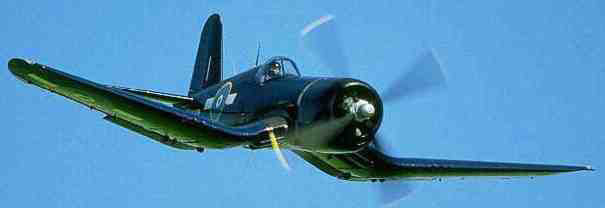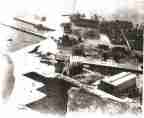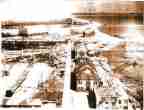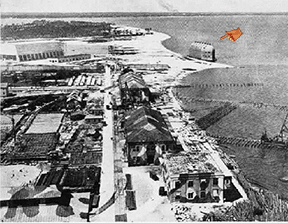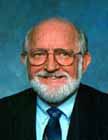Pensacola, FL
NAS Pensacola
The Naval Air Station at Pensacola is an active and
well maintained historical site. It, therefore, isn't technically a "lost"
one that this web is all about but, for a student of WWII and the Korean
war, a trip 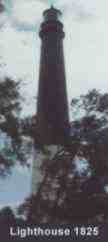 to
this area wouldn't be complete without seeing it.
to
this area wouldn't be complete without seeing it.
The "Cradle of Naval Aviation" sprawls over 5,800 acres along Pensacola Bay. Naval Air Station Pensacola offers visitors a unique opportunity to see the United States Navy - its past and present. From a Spanish fort built in 1797 to the home of the Blue Angels.
Construction of a Navy Yard on Pensacola Bay began in April 1826. The primary mission of the Yard was to suppress slave trade and piracy throughout the Gulf of Mexico and the Caribbean.
Some claim the first shots of the Civil War were fired
here in 1861. During the war the fortifications at Fort Pickens, across
the bay, were occupied by Union forces, while Fort Barrancas and Advanced
Redoubt were occupied by Confederates. When New Orleans was captured by
Union forces in 1862, Confederate troops, fearing attack from the West,
retreated from the Navy Yard and reduced most of the facilities to rubble.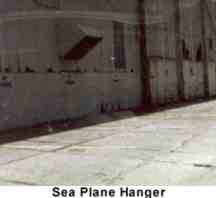
After the Civil War, the base was rebuilt for use as a Navy Yard, and many of the current structures were constructed during this period. By October 1911, the Yard had fallen into disuse and was decommissioned. In the fall of 1913, the old Pensacola Navy Yard was selected as the location for the first Aeronautic Center. In April of the following year, an enthusiastic group of nine Navy officers and twenty-three enlisted men disembarked from USS MISSISSIPPI and USS ORION to set up a flying school at the derelict Yard on the edge of the bay.
Naval Air Station Pensacola was on the road to becoming
"The Cradle of Naval Aviation." Throughout the following years
there were many changes and advances in aircraft design ,
as well as the way in which they were operated. During World War l there
was a great increase in the number of men trained to be aviators at the
base. World War l also saw the Navy beginning to use not only seaplanes,
but land based aircraft as well.
,
as well as the way in which they were operated. During World War l there
was a great increase in the number of men trained to be aviators at the
base. World War l also saw the Navy beginning to use not only seaplanes,
but land based aircraft as well.
The end of World War l brought the development of
balloons, blimps and dirigibles at Chevalier field. By the start of World
War II the base had truly become the hub of all naval air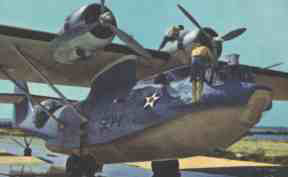 r
training activities. During those dark days, the number of pilots trained
by NAS Pensacola reached an all-time high in 1944, when 12,010 men completed
training and flew a combined total of almost two million hours.
r
training activities. During those dark days, the number of pilots trained
by NAS Pensacola reached an all-time high in 1944, when 12,010 men completed
training and flew a combined total of almost two million hours.
Today, Naval Air Station Pensacola is still the hub
of naval aviation. The initial training of all naval aviators begins here,
whether at Aviation Officer's Candidate School, or through aviation preflight
indoctrination. Many famous astronauts received their flight training
here at NAS Pensacola. For example, three naval pilots and one Marine
were among the seven astronauts selected for Project Mercury. They were
Wally Schirra, Alan Sheperd, Scott Carpenter, and John Glenn. Neil Armstrong,
mission commander 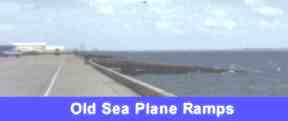 of
Apollo 11 and the first man to walk on the moon, also was a naval aviator.
More recently, naval aviators John Young and Robert Crippen were at the
controls of the space shuttle Columbia during its first flight on April
12, 1981. Naval Air Station Pensacola continues the strong traditions begun in 1913, to train
the best aviators in the world.
of
Apollo 11 and the first man to walk on the moon, also was a naval aviator.
More recently, naval aviators John Young and Robert Crippen were at the
controls of the space shuttle Columbia during its first flight on April
12, 1981. Naval Air Station Pensacola continues the strong traditions begun in 1913, to train
the best aviators in the world.
National Museum of Naval Aviation
This is, in my opinion the best aviation museum in
the world. Beautifully restored planes are out there where you are encouraged
to touch and experience. There are no "Do not Touch" signs.
All my favorite WWII planes as well as those I flew in the Korean War
era are there.
The National Museum of Naval Aviation collects, preserves and displays
appropriate memorabilia representing the development, growth, and historic
heritage of naval aviation. The story of naval aviation is presented in
chronological order by use of pictures, charts, diagrams, text, artifacts,
models, and actual aircraft. The museum is constantly expanding and adding
new exhibits. There are now many interesting exhibits outside the museum
which complement the exhibits inside. A library has also been added which
contains an extensive collection of historical naval aviation memorabilia.
The museum is open from 9:00 a.m. until 5:00 p.m. seven days a week. Guided
tours are available throughout the day. The museum also has a wonderful
gift shop. Admission is free.
